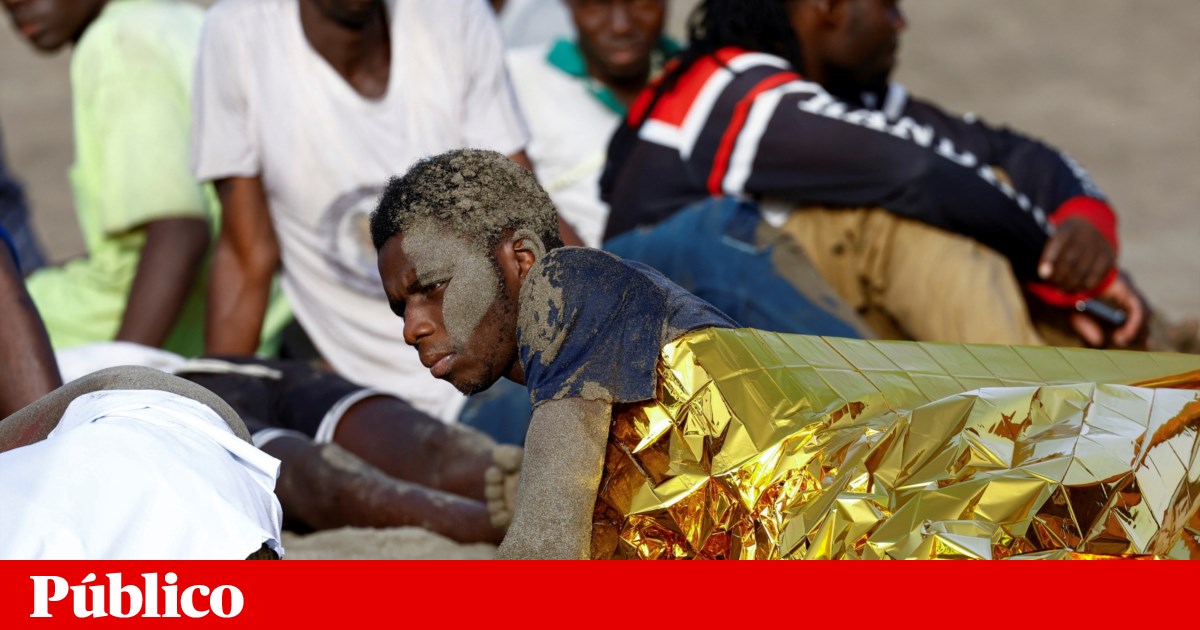A wooden boat carrying more than 60 migrants washed up on a tourist beach on the Spanish island of Gran Canaria at around 8:15 a.m. on Friday, when some holidaymakers were already there. Emergency services were already there, according to the regional newspaper. GovernorateSeveral people called 112 after noticing the boat passing another beach.
Among the more than 60 people who arrived at Las Burras Beach — sources differ on the exact number — was at least a three-month-old baby, who appeared to be fine and was taken to hospital with his mother as a precaution. But two people on board were in critical condition and at least five were in serious condition.
A large emergency response force including a helicopter and ambulances from various sources was dispatched to the site. Migrants who did not require treatment at the island’s hospitals rested on the sand, where they were photographed by a Reuters photographer. One image shows a man lying face down, his body half-covered in sand, holding a mobile phone, in a stressed position.
At about the same time that this ship reached the shore, official maritime rescue personnel escorted another boat to the port of Arguingin, also south of the island, about 50 kilometers from the capital Las Palmas. There were at least 145 people on board, three of them children.
Given its proximity to the African continent, the Canary Islands are starting to become attractive as a gateway to Europe, especially during the pandemic. The so-called “Atlantic route” from West African countries had practically no impact on arrivals to Spain until 2019, but from 2020 it is starting to replace the Mediterranean routes. In 2023, according to data According to the International Organization for Migration, 70% of migrants who arrived in the neighboring country did so via the Canary Islands. In the first quarter of this year, 81% of all arrivals to Spain came via the archipelago.
Migrants leave from as far away as Guinea Conakry (more than 2,400 km), and not all of them go to sea only in Morocco, where the proximity to the Canary Islands is greater (although they are 100 km away). There are documented cases of ships leaving Mauritania, Senegal and Guinea-Bissau thousands or hundreds of kilometers from the Spanish archipelago, making the journey extremely dangerous. The ships, generally small and overcrowded, are exposed to the currents and winds of the Atlantic coast, and many of them sink or have to be rescued by the coast guard.
Last year, at least 959 people died or disappeared en route to the Canary Islands, according to the International Organization for Migration, making it the second most dangerous route to Europe (only slightly exceeded by the Central Mediterranean route).
The main landing point for migrant boats in the Canary Islands is the small island of El Hierro, the furthest from Africa, where by the end of February more than 6,000 people had arrived (out of a total of 11,000 who arrived in the Canary Islands in the first two months of the year). People arrive there mainly suffering from malnutrition or hypothermia, and there are not enough hospital staff to deal with such a large demand.
This issue has reached the forefront of political debate in Spain. At this time, the government of Pedro Sánchez (PSOE) is trying to change the law on foreigners so that unaccompanied minors in the Canary Islands, Ceuta and Melilla are distributed across all the autonomous communities of the country. In addition to the communities (such as Catalonia) that do not want to be covered by the distribution, the PP fears that this change could serve as an incentive for more people to arrive.
Last week, Alberto Núñez Feijóo’s party agreed to distribute 347 of the roughly 6,000 children currently in the Canary Islands, prompting Vox to scrap agreements that had so far supported five regional governments.

“Hardcore alcohol maven. Hipster-friendly analyst. Introvert. Devoted social media advocate.”

